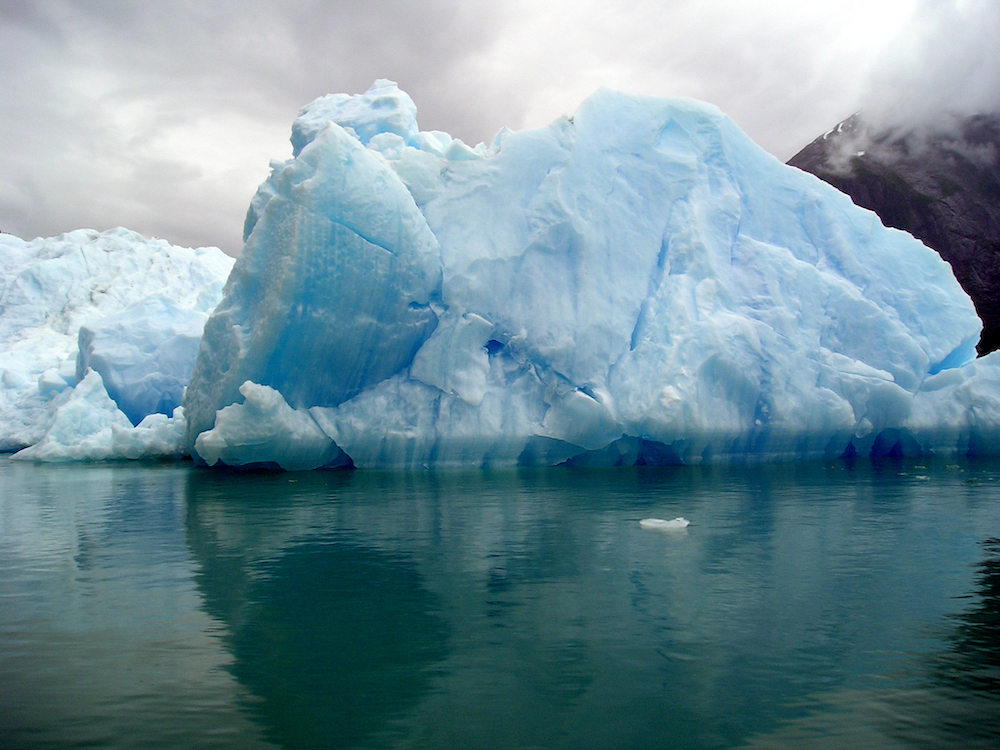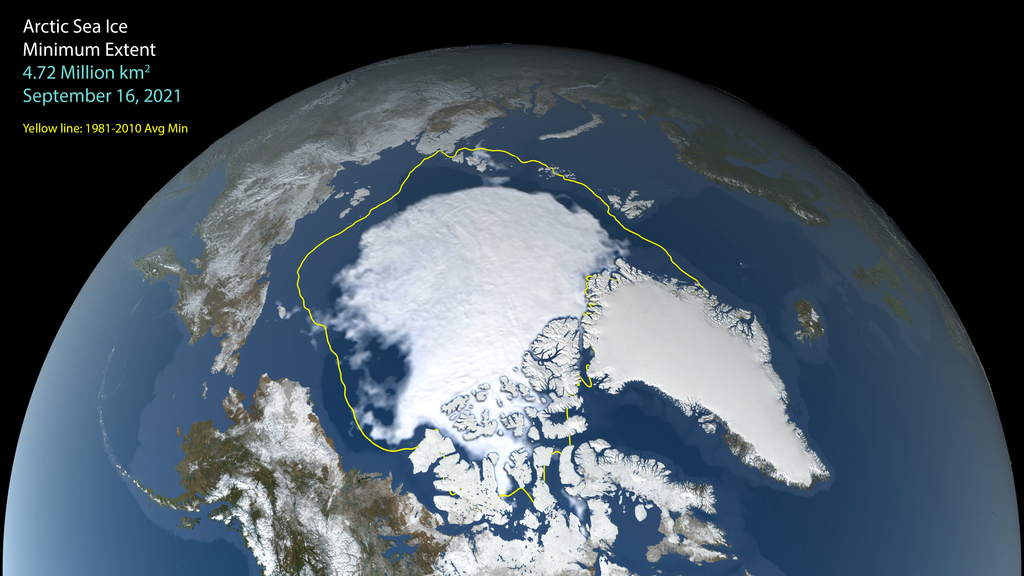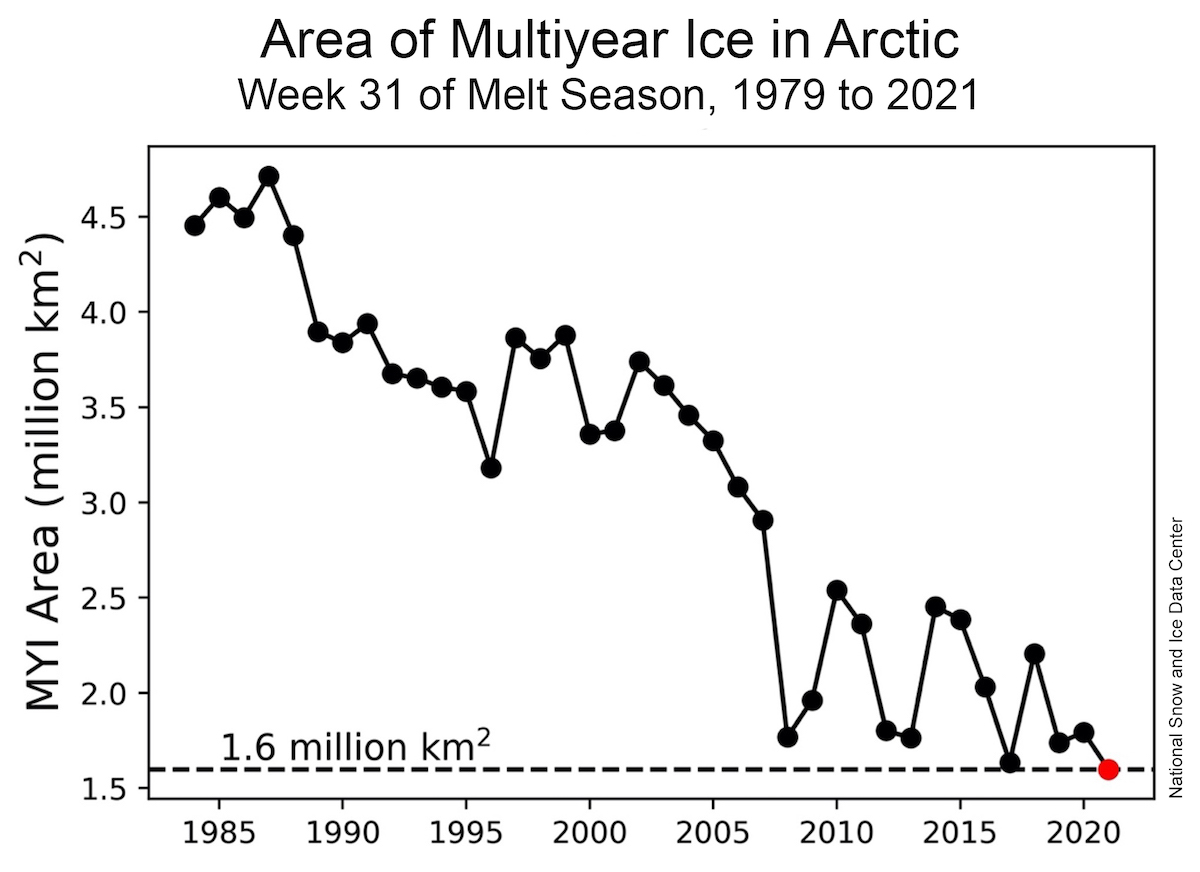Arctic Sea Ice Reaches its 2021 Minimum
Even after a relatively cool Arctic summer, multiyear sea ice is at an all-time low

Here in Anchorage, Alaska, the leaves are changing color, frost is on the ground and there’s new snow covering the mountain slopes. Fall has arrived, and winter won’t be too far behind.
In the Arctic Ocean, the summer sea ice minimum is an important milestone during this seasonal transition.
The sea ice minimum occurs when the extent of sea ice covering the Arctic Ocean reaches its lowest point for the year. Put another way, it’s the end of the summer melt season. After the minimum, ice extent will grow as open water begins to re-freeze ahead of the coming winter.
This past summer was relatively cool and stormy, which limited the loss of summer sea ice in the Arctic. As a result, this year’s sea ice minimum left the Arctic Ocean with a higher-than-usual amount of ice coverage when compared to the last fifteen years. Since 2007, only 2009, 2013 and 2014 had more ice at the end of the melt season.
But don’t be fooled: the fifteen lowest Arctic sea ice minimums have all occurred in the last fifteen years, and this year’s minimum sea ice extent is still low by historical standards. In fact, it’s nearly 1.5 million square kilometers below the 1981-2010 average. That’s equivalent to the combined size of Texas, California and Montana. In other words, there’s a lot less sea ice than there used to be.

What’s more, despite the relatively cool temperatures this summer, this year’s Arctic sea ice contained some of the lowest amounts of multiyear sea ice ever recorded. The area covered by multiyear sea ice was roughly 3 million square kilometers less than what it used to be in the early 1980s. Less multiyear sea ice translates to an icepack that’s more vulnerable to additional melting.

Why do we care about Arctic sea ice, anyway? For one thing, sea ice is a vital component of the Arctic marine ecosystem. Indigenous peoples who live along the coast of the Arctic Ocean use sea ice as a platform for hunting and fishing. Arctic wildlife like walruses, polar bears and ice-dependent seals use sea ice to rest, hunt, breed and rear their young. Sea ice is also critical to the formation of ice algae and phytoplankton, which form the base of the food web. In addition, changes in Arctic sea ice may affect weather patterns in the northern hemisphere and even global ocean circulation.
The Arctic is warming three times faster than the world as a whole.
For many years, Arctic sea ice has been on a downward trend, diminishing in extent, age, thickness and volume. According to the U.S. Environmental Protection Agency, the summer melt season in the Arctic is now 38 days longer than it was in 1979. Unless and until we get a handle on climate change, these trends are likely to continue.
But you can help turn the tide. One way to do that is to tell the Coast Guard to lead the way on reducing greenhouse gas emissions from ship traffic at the International Maritime Organization and to better prepare for climate-related changes here at home. The comment period closes October 6, so take action now!